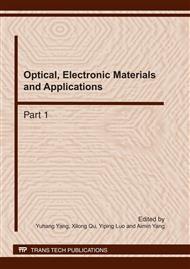p.360
p.364
p.368
p.373
p.378
p.383
p.388
p.393
p.397
Stochastic Excitation Model of Strip Rolling Mill
Abstract:
The stochastic excitation power spectral density (PSD) model and ARMA time series model are established based on the stochastic rolling force acquisition data, which is processed into stationary, normal and zero mean from a aluminum hot strip tandem mill. Characteristics of rolling force ARMA time series models are discussed by means of random process theory. The rolling forces PSD function of facilitating engineering application is obtained by utilizing Levenberg-Marquardt combined with generalized global planning algorithm, and the stochastic excitation model is established. It provides the basis for the prediction of rolling force.
Info:
Periodical:
Pages:
378-382
Citation:
Online since:
March 2011
Authors:
Price:
Сopyright:
© 2011 Trans Tech Publications Ltd. All Rights Reserved
Share:
Citation:


